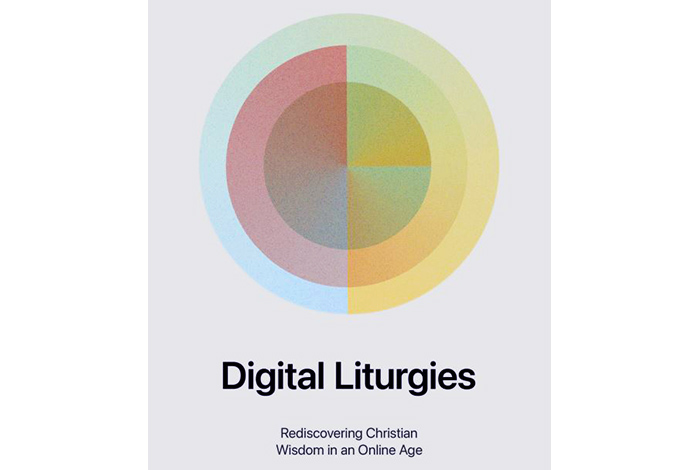“Our digital environments dislocate us, training us to believe and feel and communicate in certain ways that our given, embodied, physical environments do not.”
Evangelical Christians in the West today sense that the ambient culture has changed dramatically over the past few decades. The moral language that was commonplace in schools, workplaces, and town halls just fifty years ago is not only absent but considered hateful, even treasonous. We know this, and our preaching, teaching, writing, and evangelism often reflect a sober awareness of our post-Christian situation. At the same time, however, many evangelicals struggle to understand how the situation has been transformed so quickly. Ideas about gender identity that were strictly the domain of far-left bastions in higher education just a decade ago are now topics of conversation among pastors and parents in middle America.
How in the world did we get here so soon? I believe an important answer is about technology. The epistemological and ethical effects of technology have gone underreported in evangelical spaces partially because we don’t know how these material devices are shaping us, which in turn is due to a lack of a viable theology of spiritual formation. Just as timekeeping, heating, and automobile technologies created social and political revolutions because of what they empowered people to be and do, so also has internet technology cultivated a spiritual revolution by its very form.
Digital Creation Narratives
The idea of digital technology’s sparking a spiritual revolution is not at all a novel or reactionary concept. In fact, there’s good reason to believe such a holistically transformative effect was what the original visionaries behind personal computing always hoped. In his fascinating book World Without Mind, journalist Franklin Foer begins by narrating the history of personal computing, starting with the story of Stewart Brand. Brand, whom Foer refers to as a “crown prince of hippiedom,” was a true child of the 1960s who rejected his parents’ middle-class values and instead sought authenticity and higher truth through drugs, counterculture, and technology.
Brand’s New Age inclinations combined with his interest in digital technology to create a techno-utopianism. Brand believed that although “politics failed to transform, computers just might.” Brand favored life among the “free love” communes that had shown up in the latter half of the sixties, and he tried to imagine ways to use his interest in cutting-edge technology to help his friends become more self-actualized and liberated. The biggest result of this effort was The Whole Earth Catalog, published in 1968. “The catalog pointed readers toward calculators and jackets and geodesic domes, as well as books and magazines,” Foer writes. “The goods themselves were less important than the catalog’s theoretical arguments about them.” What were those arguments? A paragraph from the catalog summarizes its worldview thus:
We are as gods and might as well get good at it. So far, remotely done power and glory –as via government, big business, formal education, church – has succeeded to the point where gross defects obscure actual gains. In response to this dilemma and to these gains a realm of intimate, personal power is developing – power of the individual to conduct his own education, find his own inspiration, shape his own environment, and share his adventure with whoever is interested. Tools that aid this process are sought and promoted by the WHOLE EARTH CATALOG.
In another world, The Whole Earth Catalog might have been just a piece of deep trivia from a colorful and chaotic chapter in American history. But it was much more than that. For one thing, the catalog was a massive success, selling millions of copies and winning prestigious literary awards. More importantly, the catalog expressed a philosophy of transhuman liberation through technology that shaped the foundation of the modern computing industry. “The Whole Earth Catalog is a foundational text of Silicon Valley,” Foer writes. It “transposed the values of the counterculture into technology” and cast a vision for computers to be vehicles of “personal liberation and communal connection.”
. . .
Disembodiment as Worldview
The internet, which dominates our lives as the primary medium through which we encounter most of the world, is an entirely disembodied habitat. Consequently, the internet trains our consciences to think of ourselves and the world in disembodied ways. We do not exist bodily online but through photos and videos that we carefully manipulate to construct a preferred identity. On social media, our “community” is not a room full of people physically present, whom we can reach out and touch, but a collection of usernames and avatars and timelines. This habitat itself tells us a story – a story that humans are not essentially people with flesh and blood, voices, and facial expression, but “users” whom we can sufficiently know from their words, profile pictures, and shares.
This is not just a minor tweak in how we think of what it means to be a human person. It is an intellectual and spiritual revolution. And there is much reason to think that a worldview of disembodiment has currently seized the reins of cultural power. In 2022 Lia Thomas, who was born William Thomas, became the first openly transgendered “woman” to win an NCAA Division-1 swimming championship. The story became a hotbed of national controversy throughout the US, with progressive transgender activists celebrating Thomas’s victory and other observers questioning how allowing a biological male to compete against females made any competitive or rational sense. Indeed, Thomas is merely one example, a symbol of a much larger transformation in Western society with regard to the relationship between biological sex and gender. In the span of a few years, transgenderism has gone from the very fringes of cultural consciousness to the mainstream, an astonishing revolution with radical implications in our politics, medicine, education, and parenting.
Christians can only understand and respond to these and other cultural shifts correctly if we understand them in the context of digital technology’s undermining of biblical wisdom. Because wisdom is a submission to God’s good and given reality, our immersion in computer and internet existence is a crisis of spiritual formation. Our digital environments dislocate us, training us to believe and feel and communicate in certain ways that our given, embodied, physical environments do not. The more immersive and ambient the technology, the more extreme this effect.
This article © by Samuel D. James is excerpted from his blog post, How the History of the Internet Always Pointed to a Gender Revolution, posted online at DigitalLiturgies.net, April 2024.
Top image credit: book cover for Digital Liturgies, courtesy of Crossway publisher.
Samuel D. James is an Evangelical Christian thinker, tech-realist, and writer. He lives in Louisville, Kentucky, USA with his wife Emily and their three children. He is author of the book, Digital Liturgies: Learning to Rediscover Christian Wisdom in an Online Age, published in 2023 by Crossway, Wheaton, Illinois, USA.




The spiritual insights you share on ‘Christian Wisdom’ are profoundly impactful. Each post feels like a personal message of encouragement and guidance. Thank you for your dedication to spreading God’s word.